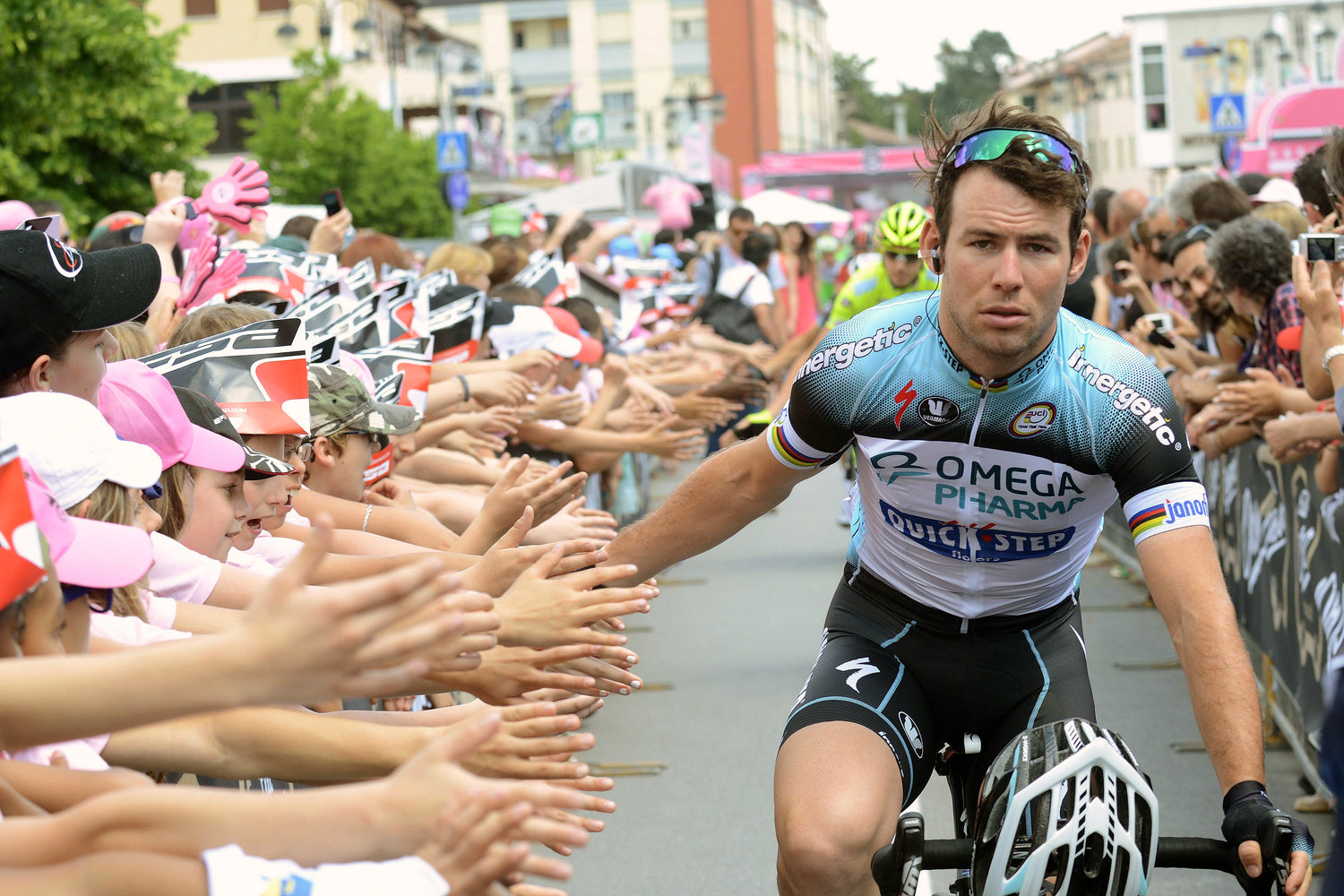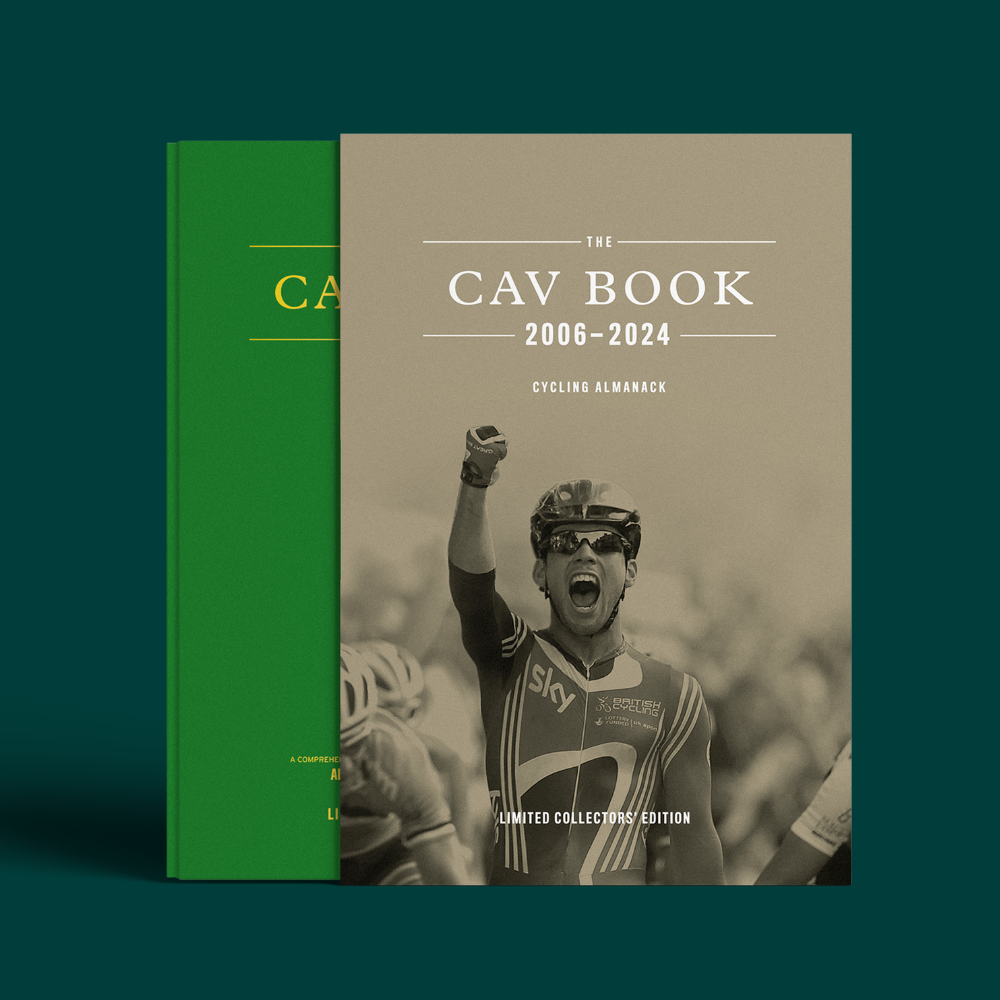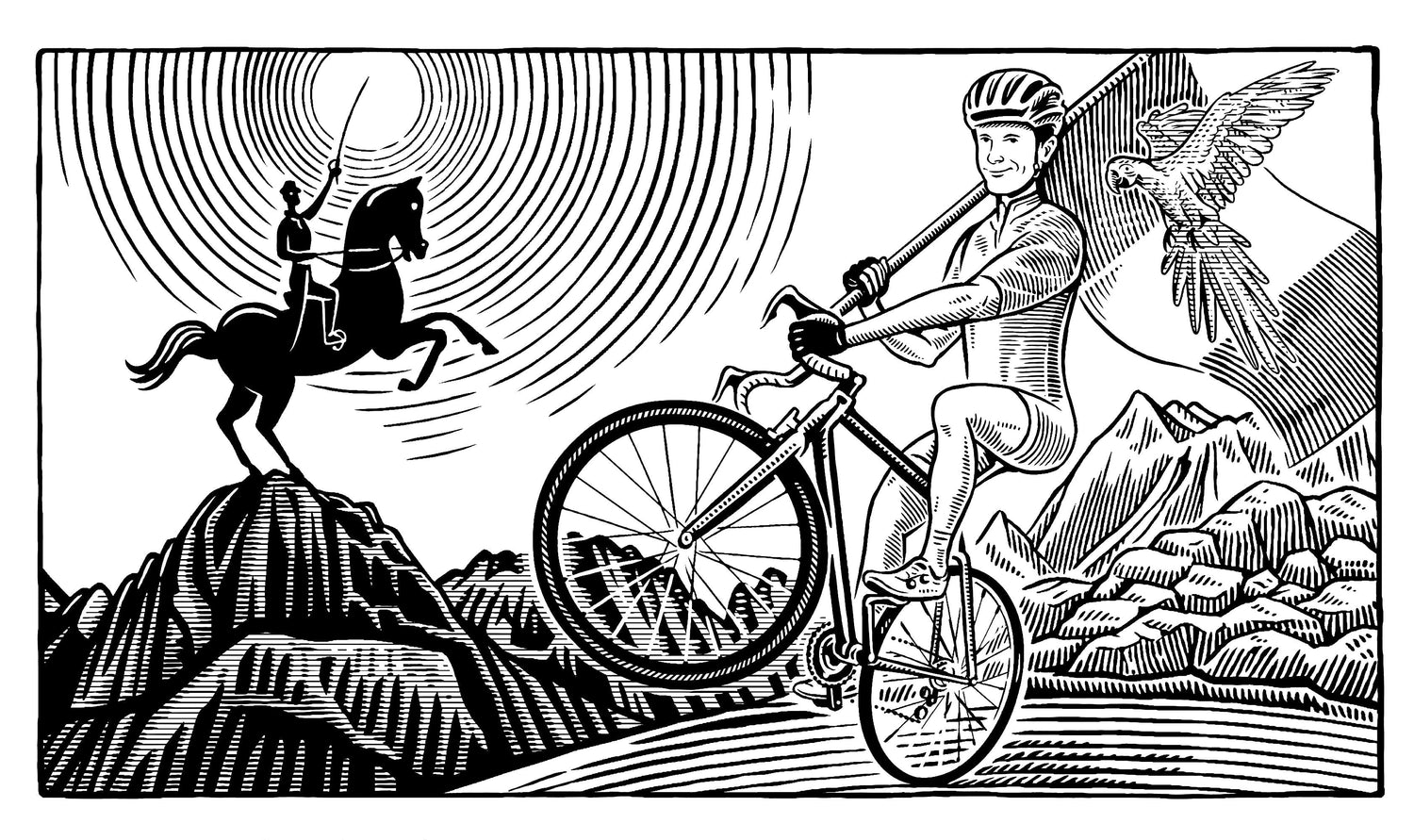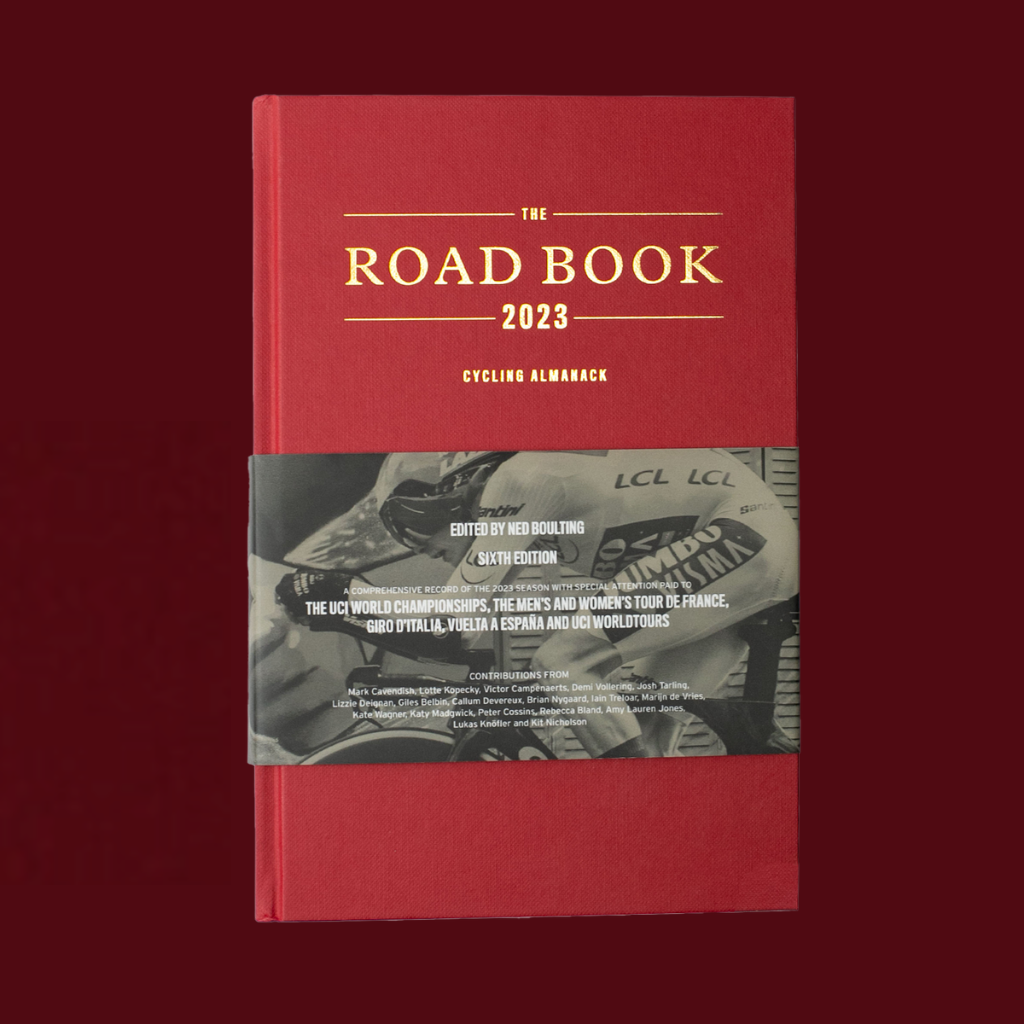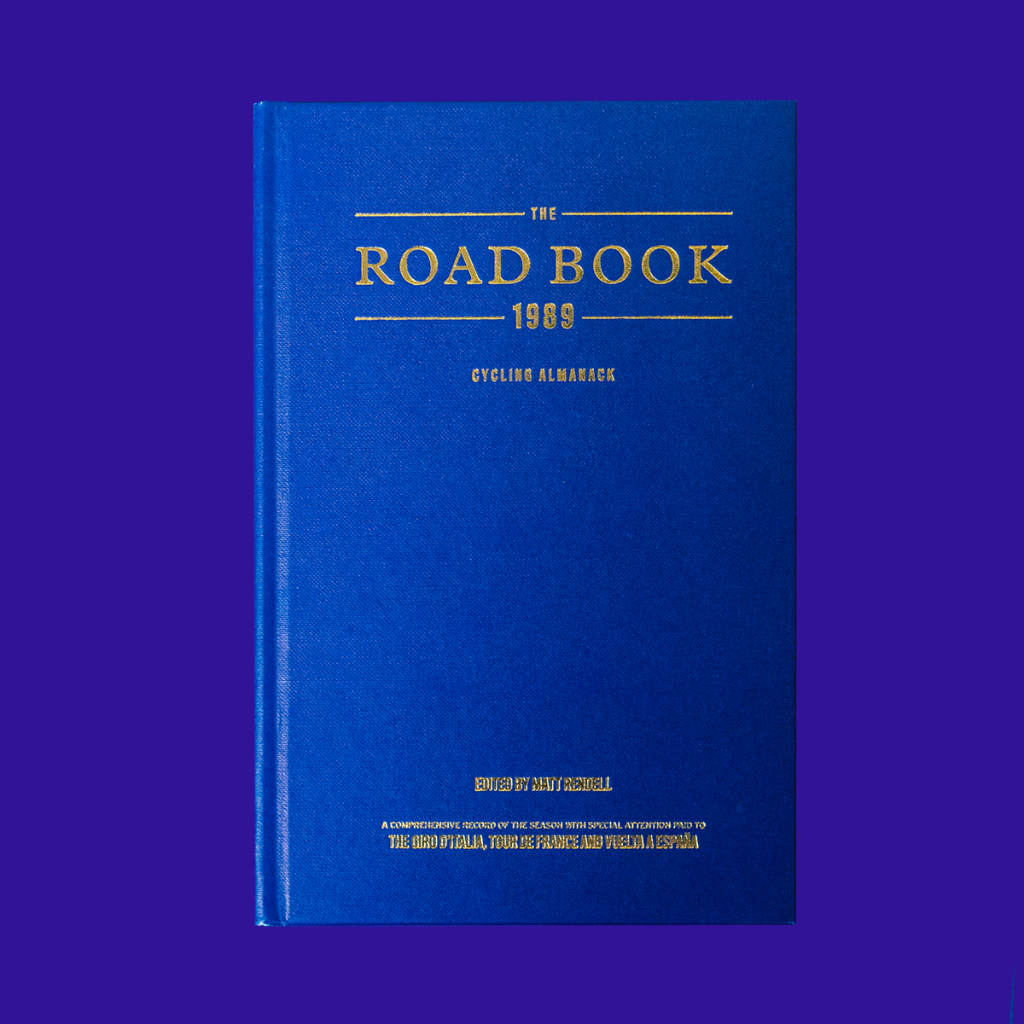27 February 2020 was the last normal day in pro cycling. The desert sun shone brightly over the vast, empty expanse surrounding the road up Jebel Hafeet. Tadej Pogačar got the better of Alexey Lutsenko and Adam Yates at the top of the climb to a smattering of applause from the few dozen spectators who’d made it out to the finish above a hushed landscape as the wind echoed through the canyons.
The unsuspecting race entourage carried out its usual business of the podium presentations and press conferences then returned to the grand and sprawling Crowne Plaza Abu Dhabi Yas Island hotel. Later that night, the ominous arrival of the CBRN – a local police unit that deals with ‘chemical, biological, radiological and nuclear incidents’ – kicked off a confusing, stifling, panic-inducing lockdown of the entire race entourage.
Covid-19 had emerged from Wuhan, China, in December, and by late February it had crept into Europe, sparking an alarming outbreak in Italy’s second largest city, Milan, and the surrounding Lombardy region. On 27 February there were only 3,600 known cases of the virus outside of China – 400 in Italy – but already it had found its way into the peloton.
Confusion reigned as riders, staff and journalists were confined to their hotel rooms, waiting for the results of hundreds of Covid-19 tests, their only human interactions the intermittent drop-and-run deliveries of food from masked hotel staff. The tiny germ hand-picked a half dozen individuals – Fernando Gaviria, Max Richeze and two staff members from UAE Team Emirates, and a couple of riders from Gazprom-RusVelo – to remain behind in quarantine while the others were cleared to return home. Pro cycling learned well before most of the world that the virus was going to be a bigger problem than expected.
It took a full week for the concept to sink in: the 2020 cycling season would be cancelled or postponed – all of it – as the thought of racing in a peloton with riders elbow-to-elbow, shouting, spitting and clearing their noses seemed like a very bad idea. In the meantime, the opening Belgian races Omloop Het Nieuwsblad, Kuurne–Brussel–Kuurne and Le Samyn went off as planned as, unbeknown to the organisers and riders, the virus had already silently begun spreading person to person there. Over the border in France, the first Covid-19 victim was breathing their last.
Italian race organisers RCS Sport admitted concern over the coronavirus even before the UAE Tour cases, but it took a government decree and Team Ineos, Astana, Mitchelton-Scott and UAE Team Emirates pulling out of the races before race director Mauro Vegni finally admitted defeat on 5 March and cancelled Strade Bianche. Tirreno–Adriatico and Milan–Sanremo were next.
With France roughly ten days behind Italy in virus deaths, the ASO stridently insisted that Paris–Nice would go on. In a rather unprecedented show of defiance against the powerful Tour de France organisers, seven of the top WorldTour teams defied UCI rules and refused to race. Their places were partially filled, with late invitations to Circus-Wanty Gobert and B&B Hotels-Vital Concept and one extra rider for each of the 17 remaining teams.
The race made it to the midpoint, the stage 4 time trial in Saint-Amand-Montrond, amid tightening restrictions by the French government that put the race ‘behind closed doors’ with none of the usual crowds of spectators demanding autographs and selfies with the riders at the start and finish. Soon one of the ASO’s marquee races would look a little bit more like those deserted roads in the UAE Tour. Few, if any, of the riders saw a finish in Nice in their future. Yet after stage 5, race director Christian Prudhomme promised: ‘I can simply say that at this instant, on Wednesday afternoon, we have received assurances that Paris–Nice will 100 per cent arrive in Nice.’
After Prudhomme’s pronouncement, US President Donald Trump made a surprise announcement that the country would close its borders to travel from Europe. The news sent EF Pro Cycling’s American Tejay van Garderen packing in a last-minute scramble to get home. Trek-Segafredo’s reigning world champion Mads Pedersen followed suit as Denmark’s prime minister urged Danish citizens to return home before the country closed its doors.
The remaining riders questioned the logic of continuing as Italy’s case count topped 10,000 with more than 600 dead and France worryingly looked to be following the same deadly trajectory. The teams sat down before stage 6 to take a vote on whether they would continue. In yet another example of the teams’ and riders’ powerlessness against the influence of the ASO, the vote failed: 11-5. However, the time of deference to ASO was coming to an end with this matter of life or death: Bahrain-McLaren packed up and headed home, and Israel Start-Up Nation finished the stage then hot-footed it to the airport while the rest raced on. Even the French star Romain Bardet said after stage 6: ‘I didn’t understand why the race went on today. We seem out of place on a bike when everyone is making efforts to stem the spread of the virus. Nothing really makes sense any more.’
As promised by Christian Prudhomme, the race made it to Nice – even if only for the start of stage 7 – and just 61 of the 136 starters reached the finish in Valdeblore La Colmiane. When stage 8 was cancelled, Nairo Quintana celebrated the stage win on a beautiful spring day, and Max Schachmann collapsed on the tarmac after holding on to his overall victory over Tiesj Benoot.
And as the sun faded from the sky, the race entourage disbanded and riders, team staff, officials, motorcycle pilots, referees, photographers, media and race staff all said goodbye to the sport as it was.
—
With no goals in the near future, the pro peloton struggled to cope with an undefined period of idleness at a time when they should have been ramping up for the Classics. They did what any sensible cyclist would do to deal with the ennui: they went riding.
The virus seemed to spread much like influenza, and health officials around the world sounded warnings for people to practise ‘social distancing’. What better way to find distance than on the bike? But during the early days of the pandemic, residents in Italy and Spain were ordered to remain in their homes unless getting essentials. Although professional athletes were technically exempt from those rules, abuse from locals uninformed about the exception drove pro cyclists in those countries indoors. Even where cycling outdoors was allowed, fear of coming into contact with the virus saw people retreat inside, and professionals and enthusiasts alike flocked to indoor cycling, escaping into the virtual worlds of platforms like Zwift, Bkool and Rouvy.
The movement was the first bright spot for cycling, with entire inventories of smart trainers cleared out and people logging on to virtual racing platforms in record numbers. Soon a curious trend began to emerge: riders weren’t just trying to keep in shape; they were logging insanely long solo rides – on the trainer or, if local ordinances allowed, on the road.
Some took on challenges to raise money for hospitals or protective gear for vulnerable essential workers. Cyclocross racer Molly Weaver rode 130km on a 100-metre course in her parents’ garden, and Geraint Thomas did three 12-hour shifts on Zwift in his garage for the NHS. Oliver Naesen logged a 365km leisure ride around East Flanders to ease the stress of worry about the pandemic. ‘I actually really needed it. If you look at your mobile phone or watch TV, you only hear or see things about the coronavirus. That’s not nice,’ he told Sporza.
Robert Gesink spent seven hours clocking up 250km on Zwift. Thomas De Gendt and Jasper de Buyst rode 300km over ten hours in honour of Milano–Sanremo and to ‘release some frustration’ – the longest ride of his career for De Gendt. Laurens De Vreese spent 11 hours on the trainer, riding 370km on a virtual Yorkshire course, and Willie Smit topped them all by riding 1,000km on Zwift in one marathon 37-hour session.
Other riders found a different form of self-torture during the Covid-19 days, following the ‘Everesting’ challenge set by the Hells 500 club in Australia. The concept is simple: ride on a single climb, up and down, and gain the vertical climbing equivalent of Mount Everest, or 8,848 metres. Record your ride using a GPS and upload it to Strava. The club verifies and records all the records.
It started with Giulio Ciccone, who Everested on Zwift, before his effort was followed by a similar one from Mark Cavendish and Luke Rowe. Then records began to fall. American mountain biker Keegan Swenson beat a mark set by retired pro Phil Gaimon. Swenson’s time was later surpassed by EF Pro Cycling’s Lachlan Morton who, after Hells 500 deemed his effort just shy of the requirements, turned around and did it again a week later, knocking 11 minutes off Swenson’s time with 7 hours and 29 minutes of suffering up Rist Canyon in Colorado. Not to be left out of the fun, retiree Alberto Contador knocked another 2 minutes off Morton’s time a few weeks later.
The women got in on the action too, with Katie Hall, Lauren De Crescenzo, Hannah Rhodes and finally Emma Pooley all taking time atop the rankings. As racing limped back to life, Pooley’s 8 hours and 53 minutes stood as the record, a full 15 minutes quicker than Rhodes.
In the time of Covid-19, the modern-day peloton seemed keen to recapture the original ethos of the sport and it raised the question: was this primal desire to plumb the depths of human endurance what has been lacking in professional cycling all along?
—
The Grand Tours began as a way to pique the imagination of the public, to inspire people with superhuman feats of endurance and great tolerance for suffering. Tour de France founder Henri Desgrange forbade motor-pacing, a common practice for professional cycling at the time, and sent the first Tour competitors off for massive stages. Riders in those early days were self-supported and mainly rode alone, and the first Tour de France stage in 1903 – a 467km slog from Montgeron to Lyon – took Maurice Garin 17 hours and 45 minutes to complete. The longest race, in 1926, covered a massive 5,745km across 17 stages including trips over the then-unpaved high peaks of the Alps and Pyrenees. This year’s riders testing the limits of their endurance with long hours on the bike evoked those early days of the Tour, when Desgrange envisioned a race so hard that only one rider could finish it – when professional cycling was a solitary, brutal punishment of the body and Desgrange told riders ‘suffering is the full unfurling of the will’.
With Covid-19 out of control, the original Tour format seemed like the perfect way to race while remaining away from other people, and it might even be a blueprint for cycling as long as the virus is around. Yet ASO, for all their power, showed weakness as the pandemic closed racing down, focusing on rescheduling their race to late August and September in the hope that the disease would have vanished. What began as a pure pursuit of athletic performance and a way to sell newspapers has become more of a sports spectacle designed to promote tourism. But when there is a pandemic, there is no tourism. With restaurants closed, hotels empty and airplanes full of ghosts, the ASO seemed to be all out of ideas.
Meanwhile, during the sad month of March, Flanders Classics, run by former basketball player Tomas Van Den Spiegel, filled the vacuum with a series of behind-the-scenes movies they had produced with Sporza in the off season, posting these entertaining films with English subtitles for free online.
They also hosted the first virtual race during the lockdown: a Tour of Flanders on Bkool. In just ten days they put together a roster of top riders including eventual race winner Greg Van Avermaet, a top-notch production and broadcasting team, and a free live stream for a simulated race over the Kruisberg, Oude Kwaremont and Paterberg. The event was complete with pre-race trash talking, from-the-gun attacking and live feeds of riders on their home trainers so viewers could see both the race avatars in action and the pain on the riders’ faces as they wrestled out every watt from their smart trainers.
This lockdown Ronde was an unexpected success and, according to Van Den Spiegel, one that drew a younger demographic than traditional races – in part because of the gamification aspect and also because the race was condensed into a shorter time frame with not a single lull in the action. It was a rare moment of innovation, quick-thinking and teamwork that should give hope for the future of pro cycling. Those riders, race promoters, broadcasters, announcers and producers in Belgium did something previously unthinkable and beautiful for pro cycling when it was at its lowest: they worked together and sacrificed for the good of the sport.
By the time the ASO followed suit with a virtual Tour de France in July to take the place of the Tour’s original dates, however, the riders were already ramping up for real-world racing at the end of the month and holding altitude camps, and so the virtual Grand Tour seemed a bit of an afterthought.
Covid-19 might have amplified pro cycling’s failings but it also brought out its strengths. The lockdown cleared the roads of so many cars that it was suddenly safer to get out and ride. Bicycle sales surged, pop-up cycle lanes provided an attractive alternative to public transport, and more people were on bikes than ever before. Automobile traffic went down so much under lockdown that the change in noxious emissions was visible from space.
If anything, this rise in people using bikes showed there should be a stronger connection between pro cyclists and bicycle riders as well as more cycling advocacy from the power brokers in the sport. More bodies on bikes means a healthier sport, a safer environment for riders to train and a deeper pool of talent down the road. It also showed that the sport needs more innovation and imagination and perhaps a lighter grasp on tradition.
Until Covid-19 is eradicated, it will be impossible for races, teams and riders to work as they have before. But the spirit of Henri Desgrange still lives in the sport’s veins. Maybe the future of pro cycling lies in its past, celebrating the vast beauty of our planet – virtual or otherwise – while engaging in the solitary pursuit of unfurling the will through suffering.



